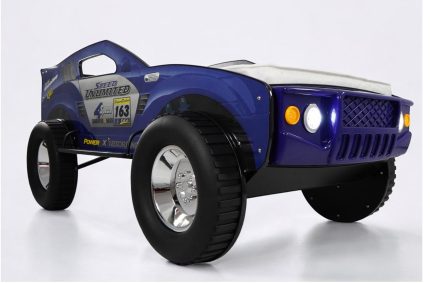When discussing the evolution of automotive technology, car beds one term frequently mentioned is “carbed.” Short for “carbureted,” carbed refers to engines that use a carburetor to mix air and fuel for combustion. While newer vehicles predominantly use fuel injection, carbureted engines remain a significant part of automotive history, especially in classic cars, motorcycles, and some performance engines. In this article, we’ll explore the fundamentals of carbureted engines, their mechanics, and how they differ from modern fuel injection systems.
What Is a Carbureted (Carbed) Engine?
A carbureted engine relies on a carburetor to mix air and kids car bed with mattresss fuel in the right proportions before they enter the combustion chamber. This device operates primarily through suction created by the intake stroke of the engine, which pulls in air and fuel. The carburetor is designed to balance this mixture, ensuring enough fuel is delivered to match the engine’s demand.
In contrast, modern engines typically use electronic fuel injection systems, where the fuel delivery is controlled by electronic signals, making them more precise and efficient. Carbureted engines, however, are simpler mechanically, which is why they were widely used in cars from the early 1900s until the late 1980s.
How Does a Carburetor Work?
A carburetor operates by using a combination of air pressure and engine vacuum to draw fuel into the air stream. Here’s a breakdown of the basic process:
- Air Intake: As the engine’s pistons create a vacuum, air is drawn into the carburetor from the intake manifold.
- Venturi Effect: Inside the carburetor, the airflow passes through a narrowed section called the venturi, which increases the airspeed and reduces pressure. This pressure difference draws fuel from the fuel bowl through a nozzle.
- Mixing Air and Fuel: The air mixes with fuel in the carburetor’s throttle body, creating an air-fuel mixture suitable for combustion.
- Delivering the Mixture: The air-fuel mixture is then directed into the engine’s cylinders, where it’s ignited, powering the engine.
Carburetors are adjustable and can be tuned to adjust the air-fuel mixture for various driving conditions, which is particularly beneficial for racing applications or high-performance engines.
Types of Carburetors
Several types of carburetors exist, each serving different purposes:
- Single-Barrel Carburetors: Simple design, usually found on small engines or older economy cars.
- Two-Barrel Carburetors: Common in many cars, offering better performance than single-barrels.
- Four-Barrel Carburetors: Typically found in high-performance vehicles, they provide more power and fuel flow for larger engines.
Benefits of Carbureted Engines
Though largely outdated in mainstream vehicles, carbureted engines still have some advantages:
- Simplicity: Carburetors are mechanical devices without complex electronics, making them easier for enthusiasts to tune and repair.
- Cost: Carburetors were cheaper to manufacture than early fuel injection systems, making them cost-effective for mass production.
- Performance Tuning: For racing or high-performance cars, carburetors offer adjustable tuning, allowing drivers to tweak fuel flow for optimal performance under different conditions.
Downsides of Carbureted Engines
Carbureted engines come with some limitations compared to modern fuel injection:
- Fuel Efficiency: Carburetors aren’t as precise as fuel injection systems, often leading to lower fuel efficiency.
- Cold-Starting Issues: Carbureted engines can be harder to start in cold weather because they rely on mechanical choke systems that need manual adjustment.
- Emissions: Due to the lack of precision, carbureted engines tend to emit more pollutants, which is why they were phased out in favor of fuel-injected engines with better emission controls.
Carburetion vs. Fuel Injection: Key Differences
While carburetors rely on engine vacuum and airflow for fuel delivery, fuel injection systems are electronically controlled and precisely calibrated for the engine’s needs. Here’s how they compare:
- Fuel Delivery Precision: Fuel injection systems measure the air-fuel ratio continuously, adjusting in real-time for improved efficiency.
- Maintenance: Carbureted engines require more frequent adjustments and cleaning. Fuel injection is generally more reliable and requires less maintenance.
- Power and Efficiency: Fuel injection often produces better fuel economy and power efficiency since it can adapt instantly to changes in driving conditions.
The Legacy of Carbureted Engines
Despite their decline in popularity, carbureted engines are far from obsolete. Many enthusiasts enjoy the simplicity and nostalgia of carburetors, and they are still widely used in motorsports, vintage cars, and even motorcycles. For those interested in DIY repairs and custom tuning, carbureted engines offer a hands-on approach to understanding and working on vehicles.
In conclusion, carbed engines have a storied history in the automotive world. While they may no longer be standard in modern vehicles, they remain a beloved technology among automotive enthusiasts, racers, and classic car owners. Their simplicity, tunability, and unique mechanical charm make carbureted engines an enduring part of car culture.

